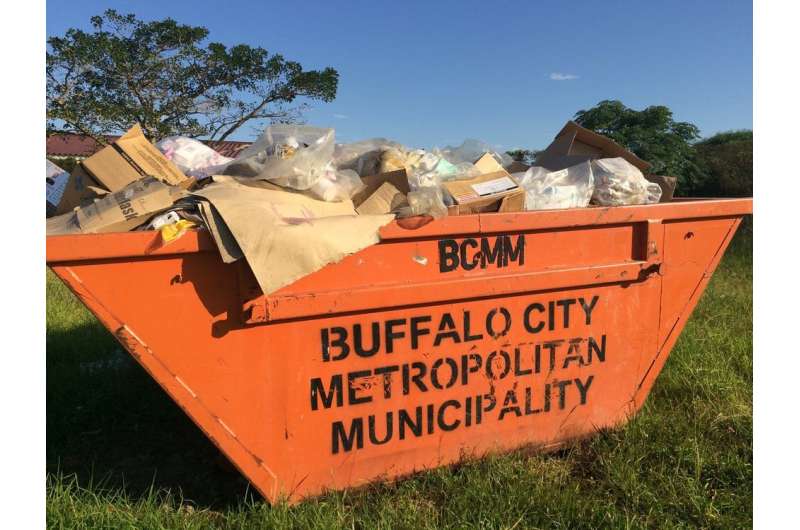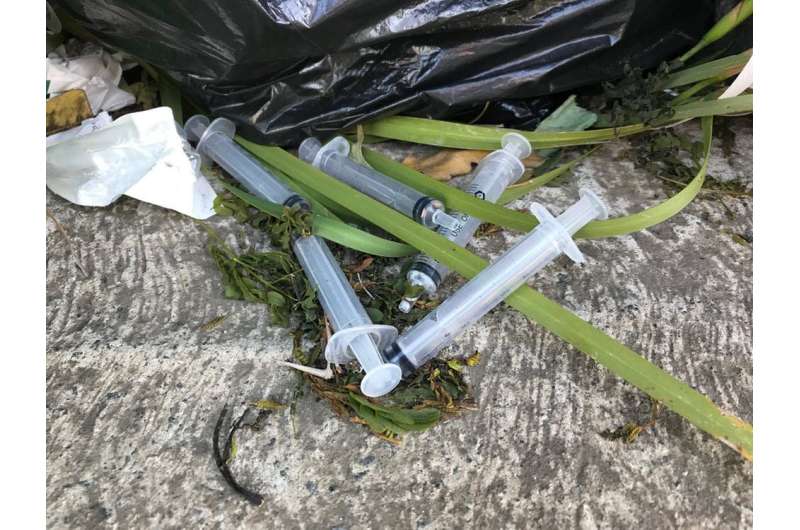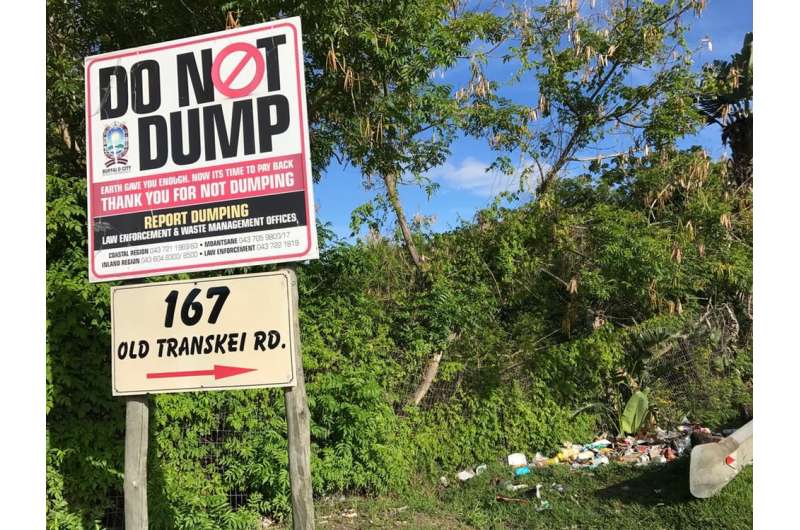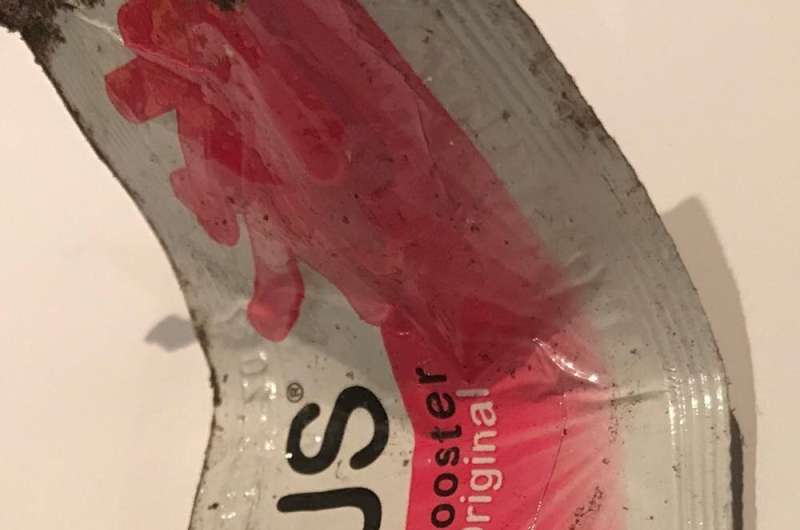Medical waste offers insights into South Africa's use of pharmaceuticals

Much of what we know about human history comes from studying things that have been discarded. The archaeology of dumpsites and middens has long informed us about societies and their pasts. This has included how people survived and sustained themselves, what they gathered, made, amassed and discarded.
Histories of rubbish have also shown that beliefs about sanitation, and what makes for a clean environment, change. These changes are, in turn, influenced by developments in technology, forms of governance, and consumer norms.
I conducted a study on an archive of medical materials, collected over three years from public waste sites around South Africa's Eastern Cape. What I refer to as 'pharmatrash' serves as a proxy for which medicines were provided or purchased, consumed, and then discarded. Pharmatrash in post-Apartheid South Africa shows the vast proliferation of medical waste, the result of increased access to healthcare products in both the public and private sectors—and on the formal and informal markets.
I set about unpacking the meaning of the rubbish that I found. I was able to identify preferences in particular settings for certain drugs—legal and illegal. These preferences reflected global market flows, advances in science, medicine and marketing, local and domestic modes of consumption, and changing social norms and desires.
Growth in medical waste
In post-apartheid South Africa, there has been a massive expansion of public health care, with radical improvements in access to drugs and diagnostics.

In turn, these improvements have resulted in the proliferation of medical waste. According to South African laws, hospitals are required to abide by protocols for waste removal. Because waste is meant to be disposed of, the governance of garbage is considered to be working effectively when rubbish is removed and destroyed. But, when these systems fail, and waste ends up where it does not ostensibly belong (on beaches, in parks, and in people's neighborhoods), public interest is aroused.
In 2016, for example, a refuse dump gone awry deposited medical and pharmaceutical waste across several kilometers of the KwaZulu-Natal coast. Syringes, condoms and pill packets were strewn across Durban beaches. The public panicked, and municipal officials closed beaches pending a clean-up. Scandals about mismanaged medical waste frequently grip the popular imagination. They are understood as evidence of state incompetence, corruption, corporate greed, and disregard for public safety.
But these scandals obscure wider realities about rubbish in contemporary South Africa. Rather than a focus on spectacular instances of waste's displacement, my research focused on pharmaceutical waste at its most ordinary, as it is found within the domestic waste stream, produced through everyday healthcare practices and household economies.
Archiving garbage
For the past four years, I have built an archive of pharmaceutical waste through collecting and classifying rubbish in the Amathole district and Buffalo City Municipality of South Africa's Eastern Cape province. I have gathered rubbish from poor, middle-class and affluent areas, in and around the cities of East London and King William's Town.
I have picked up litter from pavements outside hospitals and clinics, and from public places where people gather, work, shop and play. I identified the days on which rubbish was collected by municipal services within different areas, and often visited those sites the day after scheduled collections to study which pharmaceutical products had escaped from split or spilled rubbish bags, remaining in domestic environs.

I mapped formal or permitted sites of domestic dumping, often on 'islands' of municipal land adjacent to houses or blocks of flats, as well as sites of illegal dumping. These 'informal' dumpsites were among the richest sources of pharmaceutical waste.
The pharmatrash in this archive includes both prescription and proprietary medicines. These represent the pharmaceuticals in common use, and the prevalence of medical conditions or healthcare needs at the source of their purchase, provision, consumption and disposal.
The findings
Analgesics such as codeine-containing tablets and syrups, and the 'headache powder' Grand-pa (which combines aspirin and caffeine), were the most commonplace waste artifacts in this study.
The popularity of vitamins and dietary supplements was also evident, revealed heavy consumer demand for pharmaceutical products touted as performance-enhancers and energy-boosters.
Pharmatrash from the streets around taxi ranks, markets, shopping centers, taverns and brothels showed what products people used to sustain and enjoy themselves. These included energy boosters, painkillers, vitamins, sexual performance aids and condoms.

Pharmatrash from public health facilities showed what medicines people were being prescribed, and what forms of pharmaceutical equipment were used to treat them.
It also showed the failures of state institutions to manage waste production in accordance with laws protecting public health and safety.
Pharmatrash sourced from residential neighborhoods revealed the prevalence of infectious and non-communicable diseases in South Africa, and punctuated the desire of consumers and citizens to feel vital, productive and pain-free.
I concluded that the sale of over-the-counter drugs remains vastly unregulated and under-researched. There is little empirical evidence on how widespread is their use, and whether they are being consumed safely. The archive of pharmatrash allows us to track new forays into the world of medicines consumption. For the makers, distributors and users of these products, their shelf-life is short-lived. But their afterlife as garbage portends eons.
This article is republished from The Conversation under a Creative Commons license. Read the original article.![]()




















